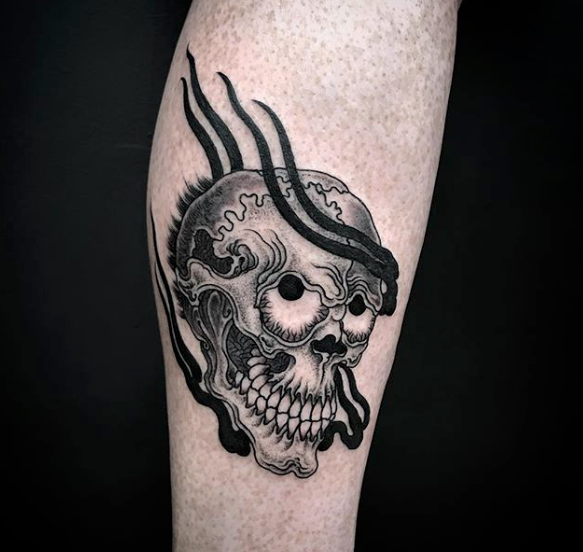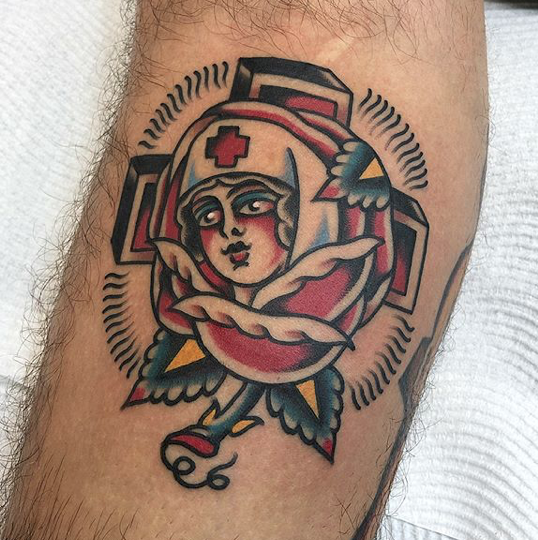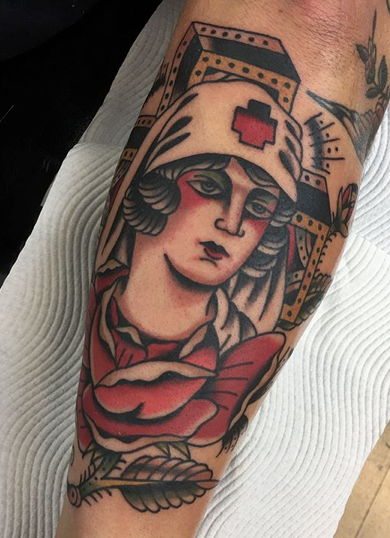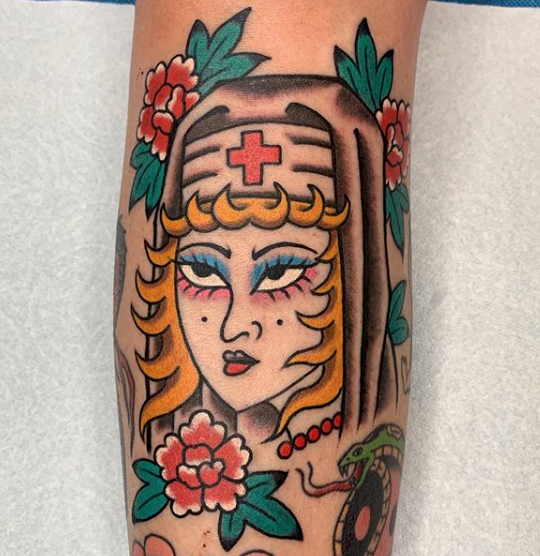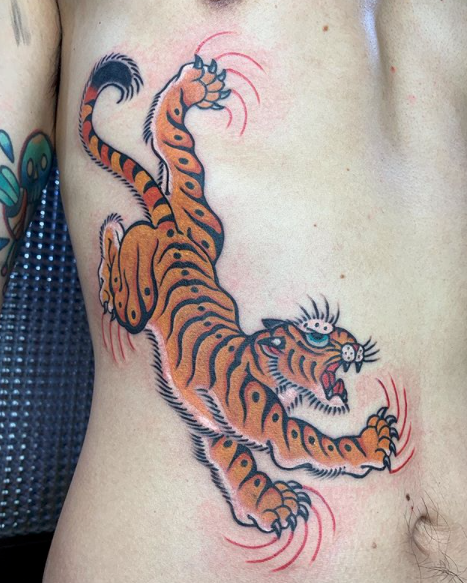Another instalment of “Get to know your Yokai!”. Yokai are monsters, spirits, phantoms, ghosts, demons and other various supernatural beings from Japanese folklore. They’re super interesting, make for great stories with their quirky attributes and like many fairytales, important life lessons those who study them can away and apply to their lives. Yokai are celebrated through many artistic mediums, such as paintings, film and you guessed it, epic tattoos!
Various Tsukumogami.
Tsukumogami are a class of Yokai, in which formerly inanimate objects upon their 100th birthday spring to life and acquire a spirit. They are generally long forgotten, unused household items, but can also inhabit long abandoned houses as well. Tsukumogami are *generally* not evil or dangerous spirits like many Yokai, they’re more pranksters who want to remind you that they once had a use, and you shouldn’t have tossed them aside, so they’re going to play tricks on you as their form of haunting. It’s thought that the idea of Tsukuogami has it’s roots in the union of Shintoism and Buddhism, which led to the belief that everything has a soul, whether it be an animal, a person or just a plain household object.
Karakasa Kozo by Capilli Tupou.
A much loved Tsukumogami is the Karakasa Kozo, sometimes referred to as the kasa obake, or karakasa obake. This roughly translates to “umbrella ghost” or adorably, “paper umbrella priest boy”. These oddly darling Yokai are usually represented as Wagasa (oil-paper umbrellas) metamorphosed into animated creatures with an incredibly long tongue, a single bulbous eye, and one leg upon which they hop about recklessly. The favourite prank of the Karakasa Kozo is to sneak up on it’s victim when they’re least expecting it, and proceed to give them a huge slimy lick with their gigantic tongue. As far as hauntings go, this is pretty tame, however quite hideous none the less.
Karakasa Kozo by Horimatsu Bunshin.
Bakezori by Milky.
Another mischievous Yokai is a long forgotten and slightly OCD sandal, who is sick and tired of being mistreated and ignored so has come to life to steal your socks and play tricks on you in hopes of you taking better care of your foot ware. He is called the Bakezori! A traditional Japanese sandal (a “Zori”) made out of woven rice straw, when he becomes a Yokai on his 100th birthday. He has little arms and legs, one big eye and a long protruding tongue. Much like the Karakasa Kozo, he isn’t usually considered dangerous, and haunts by way of playing tricks. If you have ever walked down your hall way at night and swear you have heard someone walking behind you, only to turn around and there be no one, that’s when you know you have a Bakezori in your house.
Generally motivated by both boredom and frustration at being discarded by their owners that they served so faithfully, or jealousy and revenge towards other, newer items (particuly Geta, the Zori’s wooden, more noble cousin) they love to pester humans, and often team up with other Tsukumogami to do this. They’re known to be organised, and will rearrange your shoes you so carelessly kicked off at the entrance of your house, and organise the shoes in your cupboard from small to large. If you’ve ever made the assumption that you have a “sock monster” in your house, you may in fact have a Bakezori. Super jealous of socks (they prefer the skin to sandal contact of a foot directly on them), they can often be to blame for your missing or worn out socks. Continued neglect of these sensitive beings will lead them to feel incredibly left out, and they will simply run away and find a new place to live.
The sensitive Bakezori just wants skin to skin contact.
One final Tsukumogami Yokai is the Chochin Obake, also known as bake-chochin, chochin kozo, or simply Chochin, or in English “the paper lantern ghost”. The legend of the Chochin Obkae is thought to have been the sight of paper lanterns (which were once seen everywhere to light outside of houses, shops roads and alleyways) flickering and flailing about and moaning in the wind, making them seem alive. This, and the idea that upon their 100th birthday, inanimate objects come alive. The appearance of Chochin Obake has similarities to both the Karakasa Kozo and the Bakezori, in which it has a long, lolling tongue hanging out of it’s split paper mouth, and one or two big eyes. Sometimes they are shown as having arms and/or legs, but this is less frequent as the Chochin Obake usually either floats or is hanging up.
Chochin Obake by Horimatsu Bunshin.
Chochin Obake by Milky.
Like the Karakasa Kozo and the Bakezori, it’s main schtick is to frighten people by ay of surprise. He has a particular fondness to cackling while rolling his bulbous eyes and long tongue around at guests you have in your household, as well as watch and glare at your as you are going about your day. Occasionally Onryo, one of the most powerful, destructive and dangerous supernatural beings takes possession of a paper lantern and imitates a Chochin Obake. A famous Onryo is seen in modern pop culture is the long haired ghostly woman in horror films The Grudge and The Ring. When this happens, it’s super dangerous as the Onryo is a violent spirit whose only mission is to cause destruction, and the harmless Chochin Obake just wants to give a little fright to those who may have forgotten him. It pays to be wary around any haunted lanterns, in case a more sinister demon is present.
Karakasa Kozo by Horimatsu Bunshin
Traditional folklore stories that involve Tsukumogami, along with many other Yokai, make for great moralistic stories. They remind people that you don’t need to have too many material possessions, and we shouldn’t forget about items that served us well. In the modern era, a time of rabid consumerism and throw away culture many of us have been brought up in, these tales are a good reminder to “buy once, buy well”, to slow our lives down, to learn to fix things instead of dispose and replace. Fast fashion, bad quality and bad craftsmanship is a byproduct of our incessant need to consume and upgrade, that perhaps a little haunting from our long forgotten items that are still useful is what we need to learn to ease up on our negative impact on our planet. If my perfectly good ukulele I bought a couple years back decided to start playing itself and licking my face in the middle of the night, maybe I’d be slightly more inclined to play it, or the bicycle that’s gathering dust in the hallway zoomed madly around the house maybe I would remember to ride it. Maybe as a people, if we viewed all the items in our lives as possessing some form of soul, we would so hastily upgrade to the newest, shinier model, throw away or forget about items that served us so faithfully during its time in our lives.
Tsukumogami from Japanese anime gegege no kitaro. Fully useful household items who are tired of being forgotten, Tsukumogami spring to life after long periods of abandonment, or on their 100th birthday.
Sunset Tattoo is the home of Japanese tattooing in Auckland, New Zealand. We have a handful of Auckland’s best artists who are utterly obsessed with this style, and have made it the mission of their careers to master this traditional, world renowned tattoo form. Smaller one shot, or larger Irezumi pieces are both welcomed by our talented artists. From Uber-traditional Tebori tattooing, to western traditional/Japanese fusion we have an artist to suit each and every unique Japanese tattoo request. For more information, please get in touch with the studio.
CONTACT:
www.sunsettattoo.co.nz
info@sunsetattoo.co.nz










